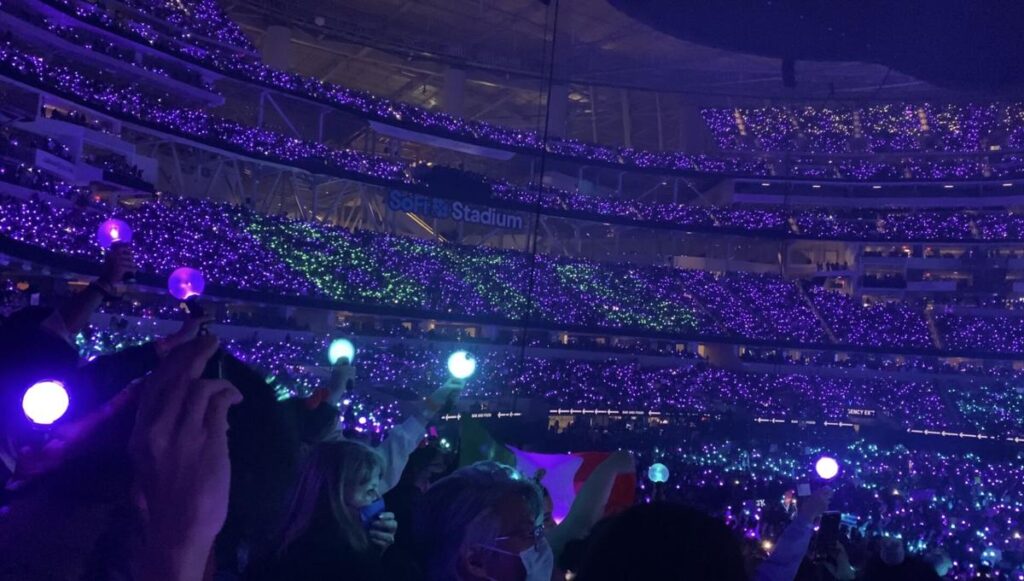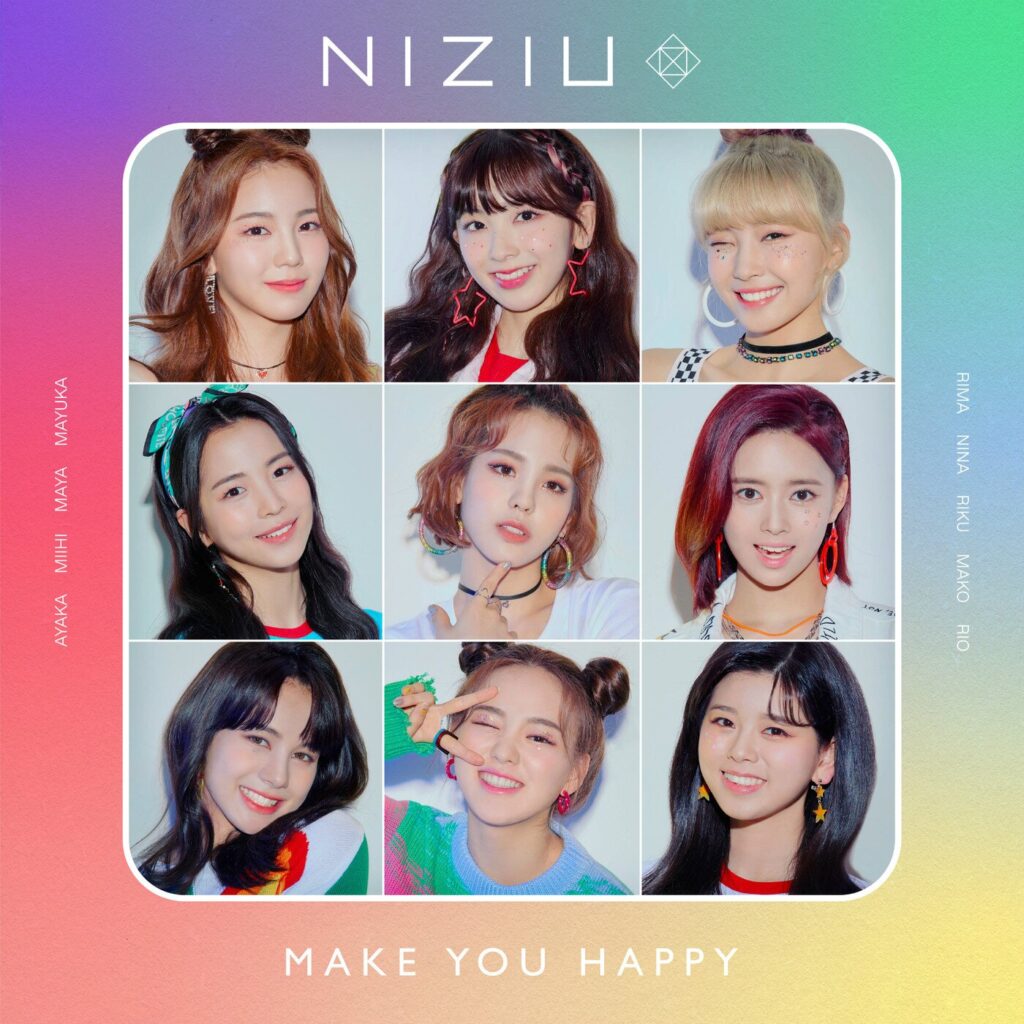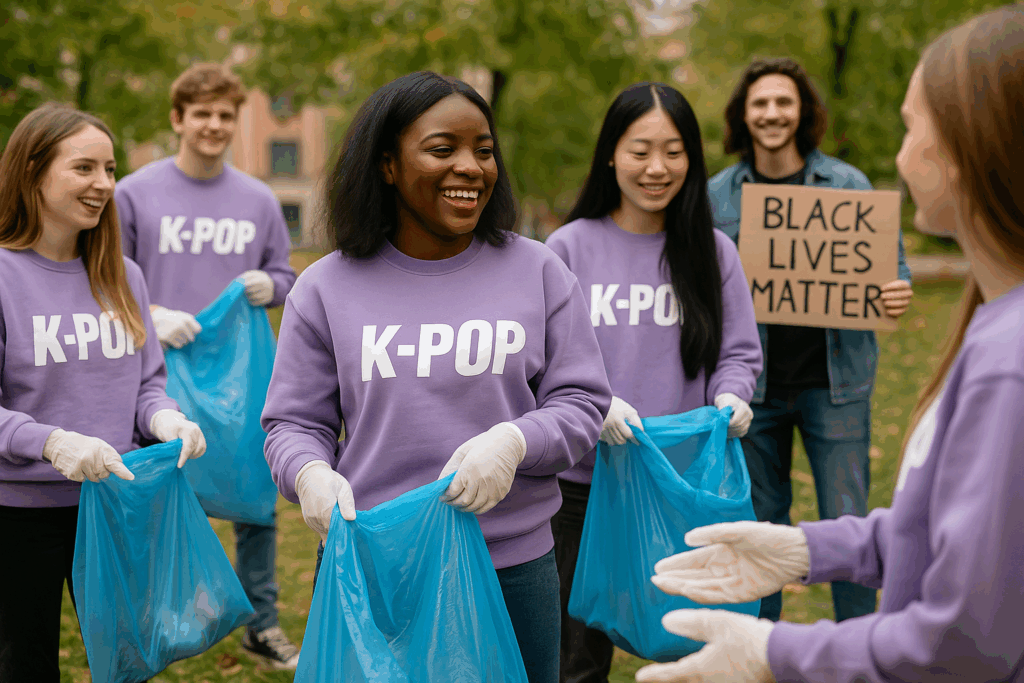The Global Popularity of K-POP and BTS’s Influence
The global success of BTS has significantly contributed to the worldwide recognition of K-POP. With platforms like YouTube, TikTok, and Netflix, K-POP content is now instantly accessible to fans around the world. As its popularity grows, the term “K-POP style” has also emerged, symbolizing a unique blend of music, visuals, and culture.

What Exactly Is “K-POP Style”?
Defining “K-POP style” isn’t simple. Musically, it mixes various genres like pop, hip-hop, EDM, and R&B. Linguistically, it blends Korean and English lyrics. While the sharp choreography and synchronized performances are distinctive, many international artists have begun to replicate this.
However, when these elements—music production, trainee systems, choreography, styling, makeup, video production, and creative direction—come together under the guidance of experienced Korean entertainment companies, the result is something truly refined and globally appealing: the K-POP style.
The Global Expansion of K-POP Style
Korean entertainment companies are actively exporting the K-POP system and style around the world. Some notable examples include:
- NiziU: A Japanese girl group formed by JYP Entertainment, topping Japan’s Oricon charts.
- SB19: A Filipino boy group trained for three years under a Korean-style system by ShowBT Entertainment. They now have over 1.58 million YouTube subscribers and were nominated at the Billboard Music Awards for Top Social Artist.
Similar K-POP-style groups are now appearing across Asia. For instance, Tencent’s “League of Legends” created a virtual girl group styled like a K-POP group, mixing Korean, English, and Chinese lyrics in their music video for “MORE”.

From K-POP Style to K-POP as a Genre
As the global presence of K-POP grows, we may soon face a world where “K-POP without Koreans” becomes a reality. To stay ahead of the curve, Korea must shift its focus from simply promoting a style to solidifying K-POP as a distinct genre.
Turning K-POP into a genre, like hip-hop or reggae, means that anyone—regardless of nationality—can create and enjoy K-POP. More importantly, the values and essence of the genre remain intact, and Korea maintains its leadership as the birthplace of K-POP.
K-POP Fandom: A Cultural Movement
One reason K-POP goes beyond music is the fan culture. K-POP fandoms are known for their social activism, including donations, environmental campaigns, and political awareness. These are not corporate-led initiatives, but grassroots efforts that embody the values and spirit of K-POP.
Examples include:
- Fighting discrimination and hate speech
- Participating in political activism
- Promoting diversity and inclusion
This shows that K-POP is not just entertainment—it’s a shared cultural identity and philosophy.

The Future of K-POP: An Inclusive, Genre-Based Platform
As K-POP continues to grow, we must ask:
- How do we define the boundaries of K-POP?
- Should K-POP be limited by nationality or language?
If we embrace K-POP as a genre, it becomes a cultural vessel capable of carrying diverse values and stories from around the world. This opens the door to deeper global collaboration and reinforces K-POP’s identity as a cultural movement.
Moreover, as K-POP’s values spread through fandom-led activities, it enhances Korea’s national image. This, in turn, strengthens the soft power of Korea and fosters a virtuous cycle where culture and national branding support each other.